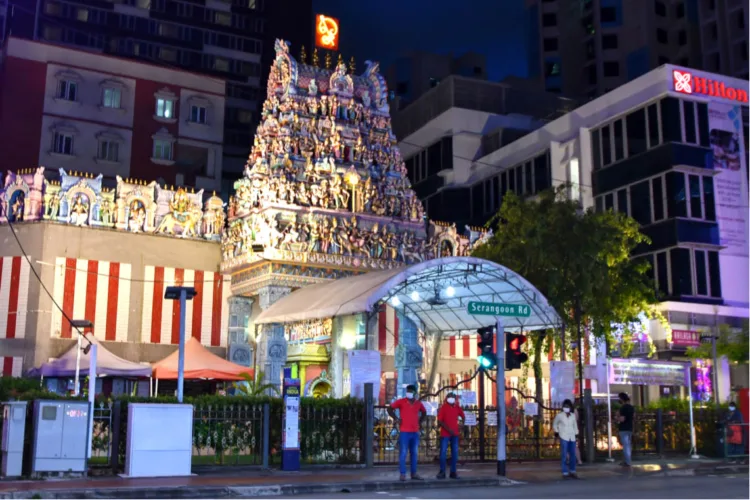Navratri is the festival for the celebration of femininity in humans.
शिवः शक्त्या युक्तो यदि भवति शक्तः प्रभवितुं
न चेदेवं देवो न खलु कुशलः स्पन्दितुमपि ।
अतस्त्वामाराध्यां हरिहरविरिञ्चादिभिरपि
प्रणन्तुं स्तोतुं वा कथमकृतपुण्यः प्रभवति ॥1॥
(Shankaracharya: Anand Lahari)
“When Shiva (The Supreme God) becomes united with Shakti (the Supreme Goddess), this union enables Him (Shiva) to act (or to create or manifest). Without Shakti even supreme Shiva is also not able to manifest. Navratri is the expression of experience of pleasure of being, the pleasure of creativity and pleasure of life. Every night is different and denoted by a different goddess depicting special power, quality and mood. And this happens not only in India but all over the world where the Bhartiya culture has reached. Temple structures are the contains of spaces for such celebrations.
Sri Veeramakaliamman Temple, also known as Soonambu Kambam Kovil, is located in the Little India area in Singapore. Idols of Goddess Kali and Parvati are worshipped in the temple. The temple was established in 1855 and the temple structure was built in 1881 by the Bengali community in Singapore.
Kali, also known as Kalika, is the Goddess associated with time, death, violence, sexuality, female empowerment, and motherly love. Her idol has a garland of human skulls around her neck, an ax and some human skulls in her hand, some human skulls are tied around her waist as well. Her tongue is sticking out and some drops of blood are also dripping from it. This fierce image has a strong message to convey whereas, in contrast, the idol of Parvati shares peaceful family moments with her sons Ganesha and Murugan. The temple structure is in Dravidian style which is contrary to the style of North Eastern Kali temples in Bengal. Shakti Peeth of Kali in Bengal is well known and Kali Mata or Kali Maa is revered in Bengal. This is the best example to showcase the blend of regional diversity of Bharat through architecture; after all the inner spirit remains the same.



















Comments